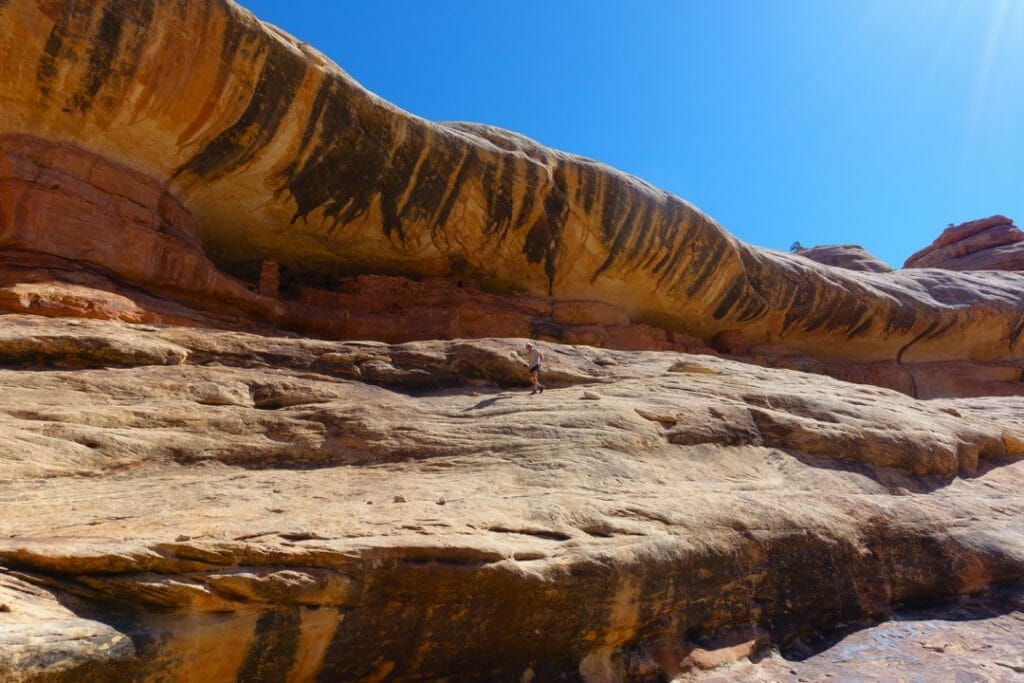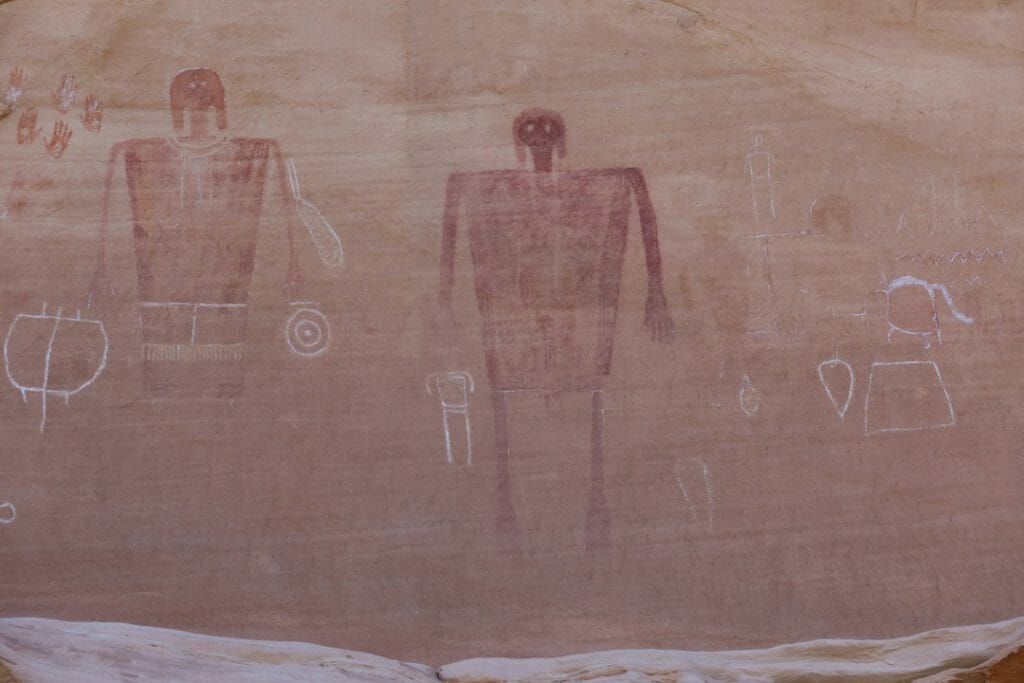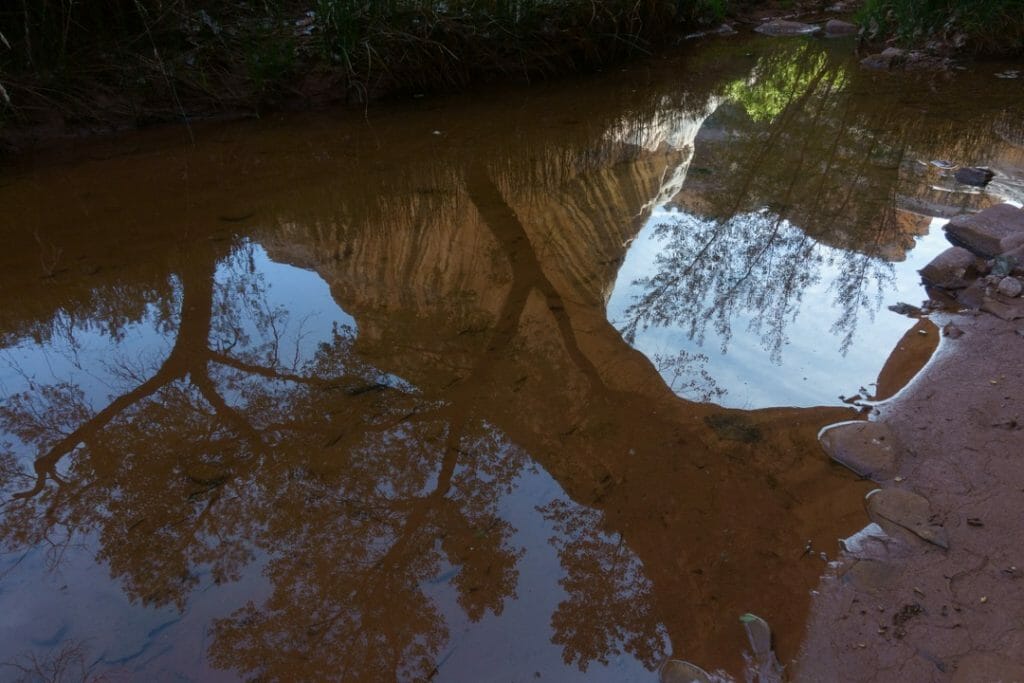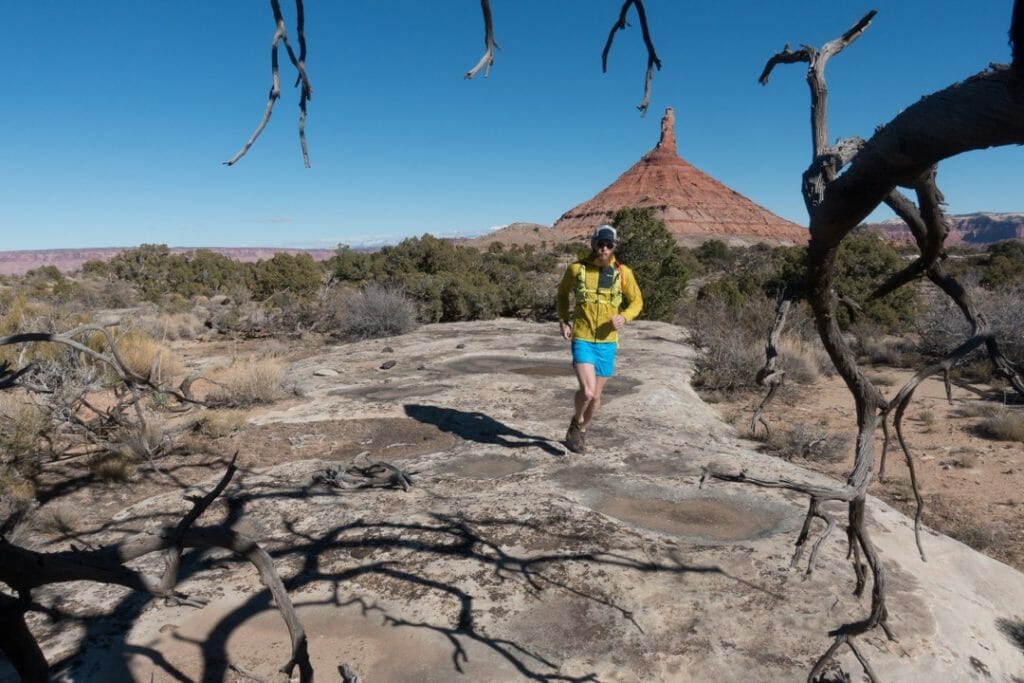“Impossible.” That’s what locals told me when I showed them my proposed 140-mile run through Bears Ears National Monument on a map. When I told them I wanted to do it in four days, they just shook their heads. Impossible.
What those folks didn’t realize was that that word—impossible—is music to my ears. As soon as someone says it, I know I’m on the right path. But that wasn’t the only reason I had a good feeling about this challenge. I’d also recently spent a big chunk of time in Bears Ears working with Patagonia to help protect this special part of the world. Because we were busy with filming every day, I didn’t get to see much of this newly classified national monument at that time—but it was enough to foster in me a deep appreciation for the place as well as an insatiable desire to see more.
On top of that, as I set out for my four-day challenge, I was accompanied by my friend and veteran trail running icon Jared Campbell. Joining us would be my two good friends Steven Gnam and Matt Irving, both of whom are excellent runners. I felt confident that this team would make the most of our adventure and would share my awe for this breathtaking place and partake in its inspiration.
Thanks to my training before this adventure with Scott Johnston, I felt fairly well prepared. In fact, Scott’s advice and coaching proved to be absolutely essential throughout the run. When you’re planning to spend an intense time in such a special place like this with petroglyphs and archaeological sites almost everywhere you look, you don’t want it to be a sufferfest. You really want to enjoy it and take it all in. The highly specific and individualized training I did with Scott was really critical to making this trip a success for me so that I could feel my best and enjoy the surroundings to their fullest.
Day One
Early on the morning of April 20, 2017, we set out to make the Bears Ears crossing a reality. After being dropped off at the Sundance Trailhead on the western border of the monument, we watched the truck pull out of sight. And just like that, we were all alone in the desert.
As the sun rose higher in the sky, we dropped down into Dark Canyon and ran along it for the better part of the day. Of course, as anyone who has spent time trail running knows, it can be kind of a stretch to use the word “running” to describe our progress. On a multiday trip like this in the Utah desert, you can’t exactly just go as light as you would on a typical run. The running packs we carried weighed 16–25 pounds; we had packed light overnight gear, food for two days, and water (and water filters) to sustain us throughout the trip. My Sportiva Helios SR shoes served me well that day and the next.
As evening came on, we opted to call it a day and set up camp in an adjoining canyon. Since we had packed as lightly as possible, we found ourselves somewhat underprepared for the cold. We spent a long night shivering; none of us got much sleep.

Day Two
In the morning, we made our way up onto the mesa and into the sunshine where the actual Bears Ears formation lies. The dry stone of the canyon walls steadily transitioned to coniferous forest, with patches of snow in shadows under trees. The terrain began to have a subalpine feel as we climbed. Although the “ears” themselves rise to over 9,000 feet, we stayed below them as we crossed the mesa. After a short break to admire the Bears Ears, we dropped into White Canyon, the heart of Natural Bridges National Monument. White Canyon is known for its ancient Puebloan cliff dwellings and the Black Hole, which is a flooded area where the walls are only about 1 meter apart in sections.
Relying on only a vague description of a “climber’s entrance” into the canyon, our progress proved to be a little challenging, but soon we were making our way through one of the wildest places I’d ever been. Massive arches over 100 to 200 feet wide span the canyon rims, and we stopped dead in our tracks a few times as we came around corners and were struck by the sight of these incredible arches. We also saw some of the amazing Puebloan structures as well as numerous pictographs—signs of past civilizations from over a thousand years ago.
By the end of the day, we had covered 37 miles and were visually exhausted from the unrelenting beauty. We stopped for the night at a pullout where we had stashed a truck. Thankfully, that evening wasn’t as chilly as the previous one. We got settled, ate a bunch of food, and got a good night’s sleep, knowing that in the morning, we would embark on part two of our trip.
Day Three
Grand Gulch is the epicenter of cultural heritage within Bears Ears. Many thousands of archaeological sites have been identified there from the Puebloan and even earlier cultures. Some fifth-class downclimbing through a pour-over took us down into the canyon proper. The downclimbing itself was relatively easy, but it was very exposed. Although we felt fairly confident, we were always aware that we were in a high-consequence situation simply due to how remote this area is.
Once in Grand Gulch itself, we found it was difficult to make good time just because of how many amazing cultural sites there were to see! It was also very challenging terrain requiring travel along an endless loose rock and river bottom with no discernible trail. Where there was flat ground, we were accosted by aggressive desert plants. All in all, it was quite a challenging day.

We wrapped up that third night at Collins Junction, which is probably the most popular entrance into Grand Gulch. This was one of few times during our trip that we saw anyone else. (Overall, in 140 miles of foot travel, we saw fewer than 20 people; seven of those were at Collins Junction.)
Day Four
After a beautiful night on a rocky ledge beneath some of the most amazing stars I’ve ever witnessed, we got up to creaky legs and another big mileage day ahead of us. From Collins Junction, we worked our way down to the San Juan River. Initially we had wanted to packraft out from there, but we couldn’t figure out river permits. As a result, we added another 5 miles of uphill travel along the San Juan before finally making it to Slickhorn Canyon. We spent our fourth night there, with not too many miles to go to reach the truck the following day.
The final morning, we faced about 7 miles of difficult up-canyon travel to finish our crossing of Bears Ears. As we were hauling our bedraggled selves up the final hundred yards of trail, we had the surreal experience of suddenly returning to the “real world” of people and cars. It felt odd after being deep in canyons among the relics of ancient civilizations whose people never knew of roads or automobiles.
Bears Ears: A Singular Experience
The feelings and thoughts I experienced in the Bears Ears National Monument is something that cannot adequately be communicated through writing. It is something you have to discover for yourself. When you do go, do it carefully, cautiously, and respectfully. This is sacred ground. To visit is a privilege; to protect it is our responsibility. Knowing that Bears Ears is currently in the crosshairs, as the federal government and the Utah state legislature aim to dismantle the Antiquities Act and rescind Bears Ears’ monument status, I was especially grateful to have had this experience.

Throughout the trip, I had felt as if we’d been walking in the footsteps of the ancients. I had the distinct feeling that these large panels of petroglyphs we kept seeing were almost like road signs, messages from one person or group of people to another letting them know where to go and where they’d been. It was a singular experience to witness this spectacular terrain and to imagine these historic peoples moving through it millennia ago, maybe in a similar fashion, running or jogging during the day, and staring up at the stars at night.

